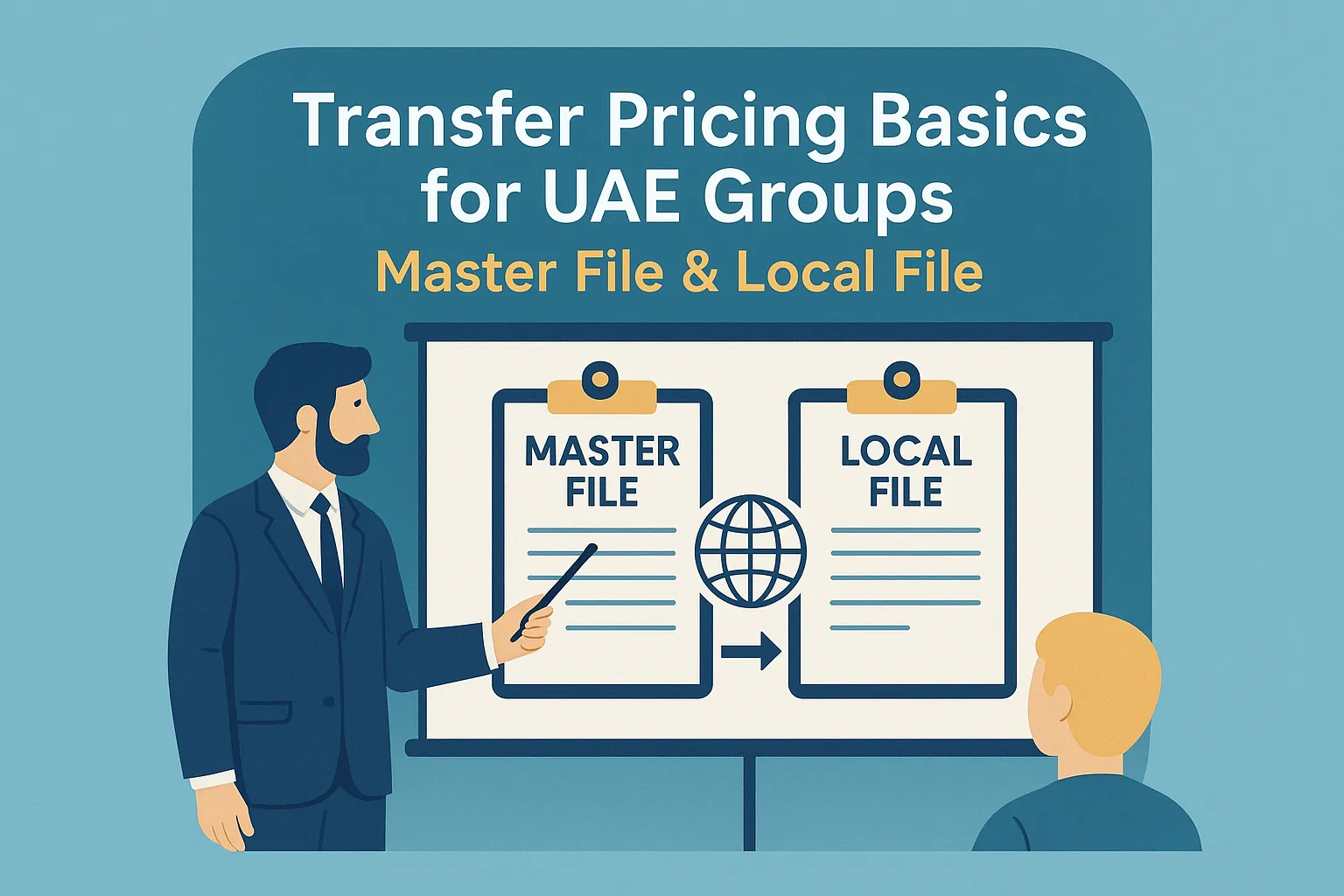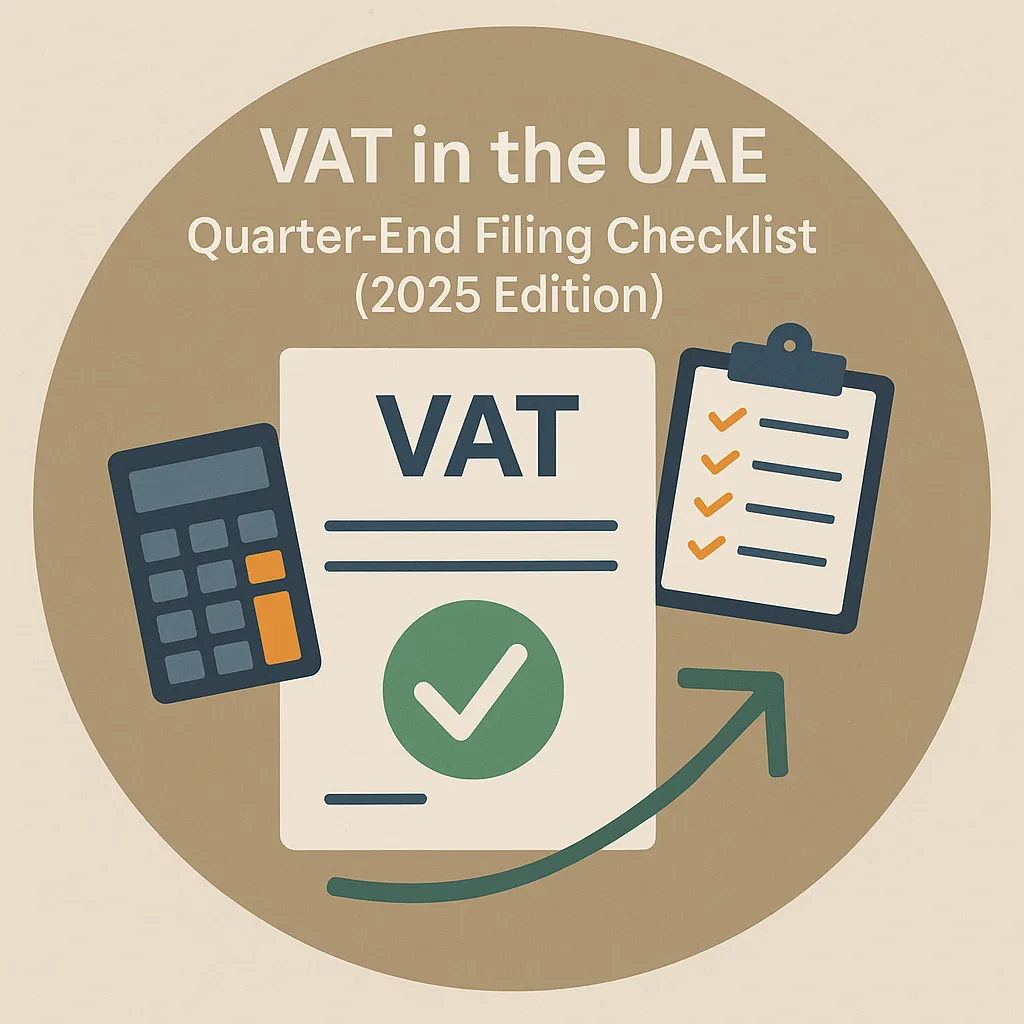
Master File & Local File: What UAE Groups Need Now
This practical Transfer Pricing UAE 2025 guide explains related-party thresholds, what belongs in your Master File and Local File, and the data to start collecting today for a smooth review. If you want done-for-you compliance, our Transfer Pricing & Corporate Tax Advisory is rated Top in UAE and the Best in Dubai for SMEs and family groups — truly Top-notch service in UAE.
1) Related-Party Thresholds & Triggers
Determine if your UAE entities meet documentation thresholds based on group size, transaction materiality, and related-party definitions. Map all controlled transactions: goods, services, royalties, cost sharing, financing, guarantees and recharges.
- Build a party map: shareholders, sister companies, free zone affiliates, offshore SPVs.
- Quantify each transaction category and period coverage.
- Flag high-risk items (intangibles, management fees, financing spreads).
2) Master File vs Local File — Documentation Structure
The Master File tells the group story; the Local File defends the UAE entity’s prices. Keep them connected with consistent numbers and narrative.
- Master File: group overview, supply chain, intangible ownership & strategy, financing, and group TP policy.
- Local File: UAE entity profile, detailed transaction descriptions, functional analysis, method selection, comparables and financial testing.
- Appendices: intercompany agreements, invoices, segmented P&L, allocation keys, working papers.
3) Functional & Risk Analysis (FAR)
FAR analysis documents who performs which functions, uses what assets, and bears which risks. It is the backbone for choosing the tested party and TP method.
- Capture headcount by function (sales, logistics, R&D, management).
- List assets used (IP, key contracts, equipment, platforms).
- Record risk controls (credit, market, inventory, foreign exchange).
4) Methods, Tested Party & Benchmarking
Choose an appropriate method (CUP, Resale, Cost Plus, TNMM, Profit Split). For many UAE distributors or service centers, TNMM with operating margin or cost-plus mark-up is common, supported by a benchmarking study.
- Define the tested party (usually the simpler entity).
- Screen comparable companies, set accept/reject criteria, compute interquartile range.
- Tie the final margin/mark-up to the Local File and ERP actuals.
5) Intercompany Agreements & Invoicing Hygiene
Paper the policy. Clear intercompany agreements aligned to TP reports reduce disputes and speed audits.
- Ensure scope, pricing formula, responsibilities and IP clauses match the FAR and benchmarking.
- Invoice regularly with proper descriptions; avoid year-end lump sums without support.
- Keep board minutes or approvals for significant policy changes.
6) 30-Day Transfer Pricing Data Readiness Sprint
A quick plan to get your TP documentation on track without slowing operations.
- Week 1: Map all related parties & transactions; gather agreements and prior studies.
- Week 2: Build segmented P&L; capture headcount by function; compile invoices & allocation keys.
- Week 3: Draft FAR; choose tested party & method; kick off benchmarking.
- Week 4: Finalize ranges; align invoicing; prepare Master/Local File outlines and approvals.
Common Transfer Pricing Mistakes (and Quick Fixes)
- No written agreements — Fix: issue signed contracts aligned to TP policy.
- Single blended margin for multiple functions — Fix: segment activities and test appropriately.
- Outdated benchmarking — Fix: refresh screens and financials regularly.
- GL/ERP doesn’t match TP schedules — Fix: add reconciliation workpapers and review controls.




